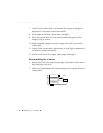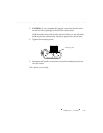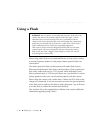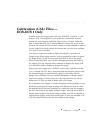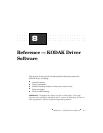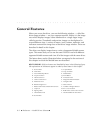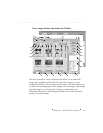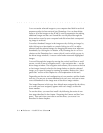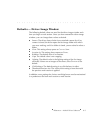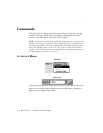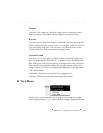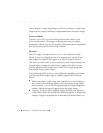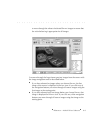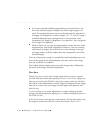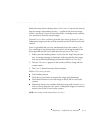
. . . . . . . . . . . . . . . . . . . . . . . . . . . . .
8-4 Reference — Kodak Driver Software
You can transfer selected images to your computer hard disk for archival
purposes and/or for later retrieval into Photoshop. You can then delete
some or all of the images on the PCMCIA card in preparation for making
additional images on that card. Sound files can be played through the
driver and are saved to your computer hard disk when their correspond-
ing image is archived.
You select thumbnail images in the image area by clicking an image, by
shift-clicking (on a Macintosh) or control-clicking (on a PC) to add or
subtract from the selected images, by dragging the mouse over adjacent
thumbnails, by clicking the ALL button, or by choosing the ALL or NONE
choices on the Photoshop SELECT menu (which is active while you are in
the driver image window). A narrow color border surrounds highlighted
images.
You scroll through the images by moving the vertical scroll box or scroll
arrows, or with a row of navigation tools — the navigation bar — on the
driver image window. The navigation tools allows you to move to the first
or last image, forward or back to the image before or after the selected
image, or to a specific image by entering its number. (Refer to the “Navi-
gation Bar” section of this chapter for a full explanation of this tool.)
Depending on the size and configuration of your monitor, and the thumb-
nail size, you see one or more thumbnails on each row, and one or more
rows of thumbnails in the image area of the driver image window.
The image filename (which may be a default name assigned by the driver,
or a name you have assigned), appears with each image, as does the
frame number.
To use the driver, you must first install it by following the series of one-
time steps described in the chapter “Preparing the Camera and the Com-
puter.” Then each time you want to use the driver, you access it as
described in those chapters.



